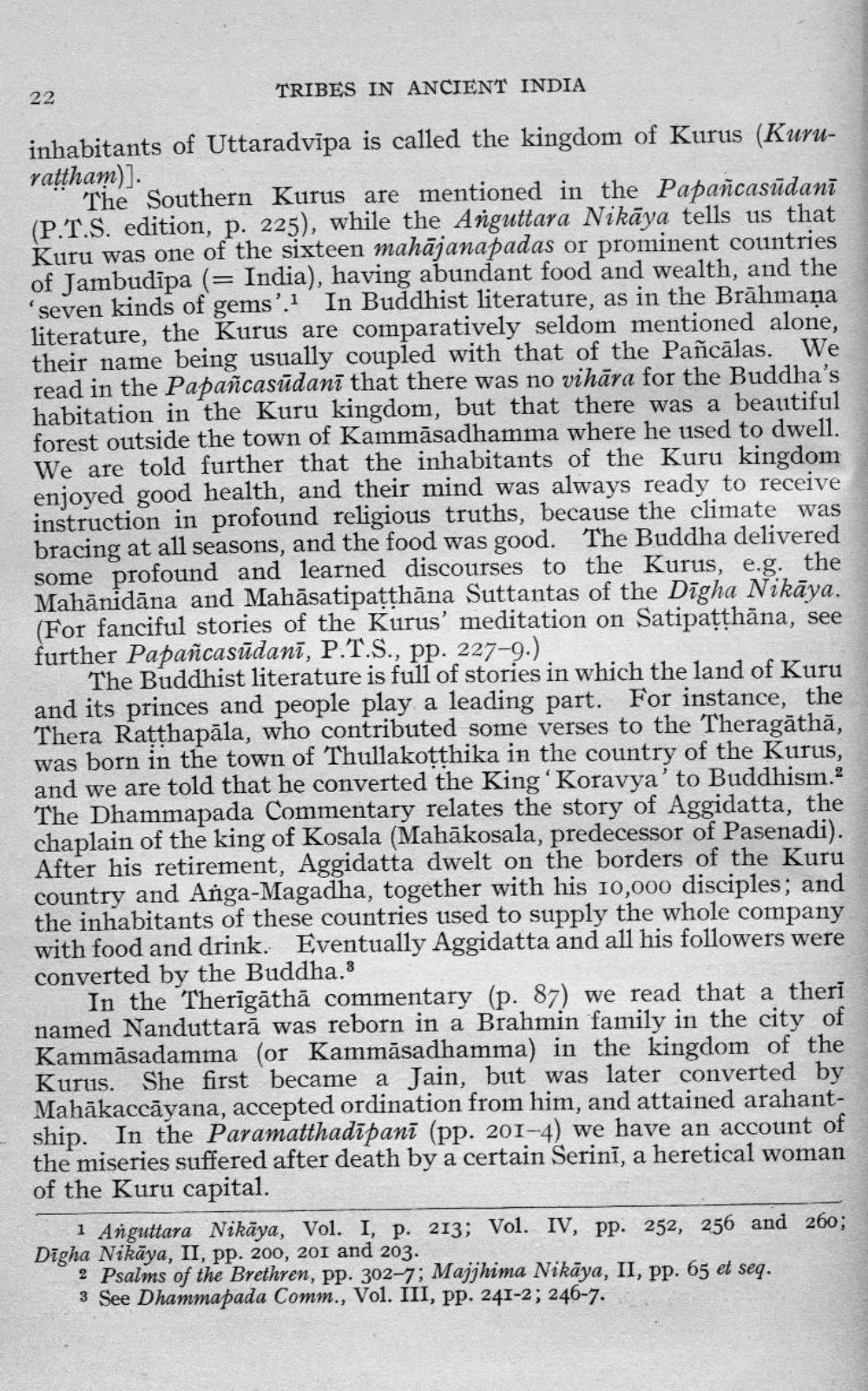________________
22
TRIBES IN ANCIENT INDIA
inhabitants of Uttaradvipa is called the kingdom of Kurus (Kururattham)].
* The Southern Kurus are mentioned in the Papañcasūdanī (P.T.S. edition, p. 225), while the Anguttara Nikāya tells us that Kuru was one of the sixteen mahājanapadas or prominent countries of Jambudipa (= India), having abundant food and wealth, and the 'seven kinds of gems'.1 In Buddhist literature, as in the Brāhmaṇa literature, the Kurus are comparatively seldom mentioned alone, their name being usually coupled with that of the Pañcālas. We read in the Papañcasüdanī that there was no vihāra for the Buddha's habitation in the Kuru kingdom, but that there was a beautiful forest outside the town of Kammāsadhamma where he used to dwell. We are told further that the inhabitants of the Kuru kingdom enjoyed good health, and their mind was always ready to receive instruction in profound religious truths, because the climate was bracing at all seasons, and the food was good. The Buddha delivered some profound and learned discourses to the Kurus, e.g. the Mahānidāna and Mahāsatipatthāna Suttantas of the Dīgha Nikāya. (For fanciful stories of the Kurus' meditation on Satipatthāna, see further Papañcasādanī, P.T.S., pp. 227-9.)
The Buddhist literature is full of stories in which the land of Kuru and its princes and people play a leading part. For instance, the Thera Ratthapāla, who contributed some verses to the Theragāthā, was born in the town of Thullakotthika in the country of the Kurus, and we are told that he converted the King Koravya' to Buddhism.2 The Dhammapada Commentary relates the story of Aggidatta, the chaplain of the king of Kosala (Mahākosala, predecessor of Pasenadi). After his retirement, Aggidatta dwelt on the borders of the Kuru country and Anga-Magadha, together with his 10,000 disciples; and the inhabitants of these countries used to supply the whole company with food and drink. Eventually Aggidatta and all his followers were converted by the Buddha.3
In the Therīgāthā commentary (p. 87) we read that a theri named Nanduttarā was reborn in a Brahmin family in the city of Kammāsadamma (or Kammāsadhamma) in the kingdom of the Kurus. She first became a Jain, but was later converted by Mahākaccāyana, accepted ordination from him, and attained arahantship. In the Paramatthadīpanī (pp. 201-4) we have an account of the miseries suffered after death by a certain Serinī, a heretical woman of the Kuru capital.
1 Anguttara Nikāya, Vol. I, p. 243; Vol. IV, pp. 255, 256 and 260; Dīgha Nikāya, II, pp. 200, 201 and 203.
2 Psalms of the Brethren, pp. 302-7; Majjhima Nikāya, II, pp. 65 et seq. 3 See Dhammapada Comm., Vol. III, pp. 241-2; 246-7.




